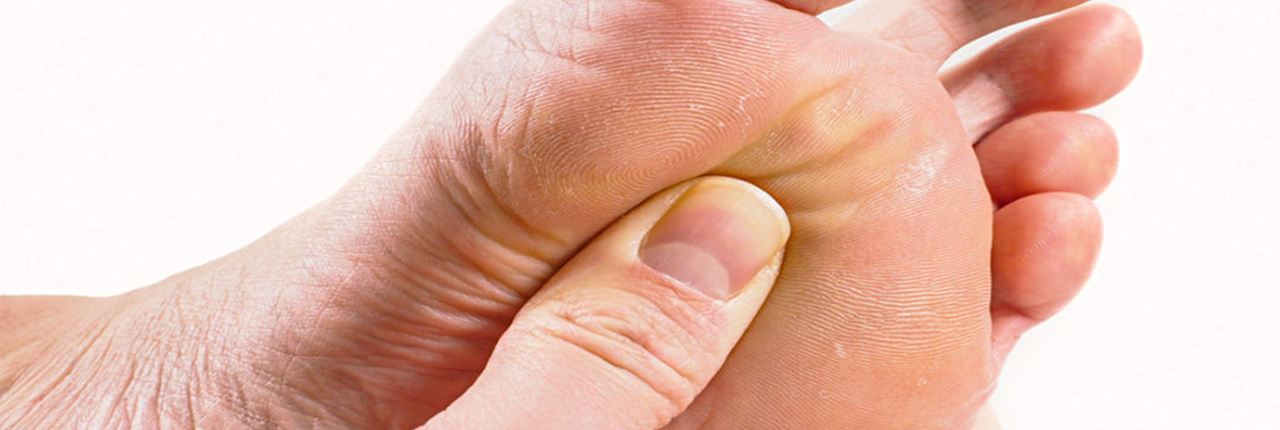Neuroma
A neuroma is an enlargement or thickening of a nerve in the foot in the area between the toes, usually between the third and fourth toes.
- Radial shockwave therapy – read our blog for more information Shockwave Therapy Blog
Causes of Morton’s Neuroma
A Morton’s neuroma is thought to be caused by an injury to the nerve, but scientists are still not sure about the exact cause of the injury. The injury may be caused by damage to the metatarsal heads, the deep transverse intermetatarsal ligament (holds the metatarsal heads together) or an intermetatarsal bursa (fluid-filled sac). All of these structures can cause compression and injury to the nerve, initially causing swelling and damage in the nerve. Over time, if the compression/injury continues, the nerve repairs itself with very fibrous tissue that leads to enlargement and thickening of the nerve.
Other causes of injury to the nerve may include simply having an incorrect walking style or an incorrect foot structure, such as overpronation (foot rolls inward), hypermobility (too much motion), or cavo varus (high arch foot) . These biomechanical factors may cause injury to the nerve with every step. If the nerve becomes irritated and enlarged, then it takes up more space and gets even more compressed and irritated. It becomes a vicious cycle.
Signs & Symptoms of Morton’s Neuroma
- Pain (sharp, stabbing, throbbing, shooting)
- Numbness
- Tingling or “pins & needles”
- Burning
- Cramping
- A feeling that you are stepping on something or that something is in your shoe
Initially these symptoms may happen once in a while, but as the condition gets worse, the symptoms may happen all of the time. It usually feels better by taking off your shoe and massaging your foot.
How a Diagnosis Is Made
Your podiatrist will ask many questions about your signs and symptoms and will perform a physical exam. A classic sign of mortons neuroma is a palpable click (Mulder’s click) when compressing the front of the foot. This test may also cause pain to shoot into the toes. This will usually cause pain or it will bring on your other symptoms.
A Morton’s neuroma is usually diagnosed based on the history and physical exam findings, but sometimes other tests such as an x-ray, ultrasound or an MRI are needed.
Treatment Options
- Wear shoes that are wide and deep in the toe box so they do not put pressure on your toes and metatarsals. Avoid wearing high heels because they cause increased pressure on the ball of your foot (forefoot).
- Metatarsal pads: These help to lift and separate the metatarsal heads to take pressure off of the nerve. They are placed just behind where you feel the pain, not on top of the painful spot.
- Activity modification: For example, you may try swimming instead of running until your symptoms go away.
- Taping
- Icing
- NSAIDs (anti-inflammatory medications)
- Arch supports or orthotics: These help to control some of the abnormal motion in your feet. The abnormal motion can lead to extra torque and pressure on the nerve.
- Physical therapy
- Cortisone injection: Helps to decrease the size of the irritated, enlarged nerve.
- Surgery: If conservative treatment does not help surgery may be needed. Surgery may involve cutting out the nerve or cutting the intermetatarsal ligament. Studies have shown surgery has an 80-85% success rate.
Prevention of a Morton’s Neuroma
- Avoid wearing narrow, pointed toe shoes
- Avoid wearing high heel shoes
Written by Karl Lockett
Neuroma
A neuroma is an enlargement or thickening of a nerve in the foot in the area between the toes, usually between the third and fourth toes.
- Radial shockwave therapy – read our blog for more information Shockwave Therapy Blog
Causes of Morton’s Neuroma
A Morton’s neuroma is thought to be caused by an injury to the nerve, but scientists are still not sure about the exact cause of the injury. The injury may be caused by damage to the metatarsal heads, the deep transverse intermetatarsal ligament (holds the metatarsal heads together) or an intermetatarsal bursa (fluid-filled sac). All of these structures can cause compression and injury to the nerve, initially causing swelling and damage in the nerve. Over time, if the compression/injury continues, the nerve repairs itself with very fibrous tissue that leads to enlargement and thickening of the nerve.
Other causes of injury to the nerve may include simply having an incorrect walking style or an incorrect foot structure, such as overpronation (foot rolls inward), hypermobility (too much motion), or cavo varus (high arch foot) . These biomechanical factors may cause injury to the nerve with every step. If the nerve becomes irritated and enlarged, then it takes up more space and gets even more compressed and irritated. It becomes a vicious cycle.
Signs & Symptoms of Morton’s Neuroma
- Pain (sharp, stabbing, throbbing, shooting)
- Numbness
- Tingling or “pins & needles”
- Burning
- Cramping
- A feeling that you are stepping on something or that something is in your shoe
Initially these symptoms may happen once in a while, but as the condition gets worse, the symptoms may happen all of the time. It usually feels better by taking off your shoe and massaging your foot.
How a Diagnosis Is Made
Your podiatrist will ask many questions about your signs and symptoms and will perform a physical exam. A classic sign of mortons neuroma is a palpable click (Mulder’s click) when compressing the front of the foot. This test may also cause pain to shoot into the toes. This will usually cause pain or it will bring on your other symptoms.
A Morton’s neuroma is usually diagnosed based on the history and physical exam findings, but sometimes other tests such as an x-ray, ultrasound or an MRI are needed.
Treatment Options
- Wear shoes that are wide and deep in the toe box so they do not put pressure on your toes and metatarsals. Avoid wearing high heels because they cause increased pressure on the ball of your foot (forefoot).
- Metatarsal pads: These help to lift and separate the metatarsal heads to take pressure off of the nerve. They are placed just behind where you feel the pain, not on top of the painful spot.
- Activity modification: For example, you may try swimming instead of running until your symptoms go away.
- Taping
- Icing
- NSAIDs (anti-inflammatory medications)
- Arch supports or orthotics: These help to control some of the abnormal motion in your feet. The abnormal motion can lead to extra torque and pressure on the nerve.
- Physical therapy
- Cortisone injection: Helps to decrease the size of the irritated, enlarged nerve.
- Surgery: If conservative treatment does not help surgery may be needed. Surgery may involve cutting out the nerve or cutting the intermetatarsal ligament. Studies have shown surgery has an 80-85% success rate.
Prevention of a Morton’s Neuroma
- Avoid wearing narrow, pointed toe shoes
- Avoid wearing high heel shoes



